In the 1960s, you'd witness a radical shift in women's dresses, showcasing bold styles like the shift dress and mini skirt. Designers like Mary Quant and André Courrèges led this transformation with clean lines and vibrant patterns, symbolizing newfound freedom. Floral prints and geometrical designs dominated, reflecting the cultural upheaval of the time. Typically crafted from comfortable cotton blends and lightweight fabrics, dresses offered both style and versatility. The era's playful motifs and chic silhouettes not only presented fashion as personal expression but also marked a significant cultural impact. Discovering more about this exciting time will reveal further style influences.
Evolution of 1960s Dress Styles
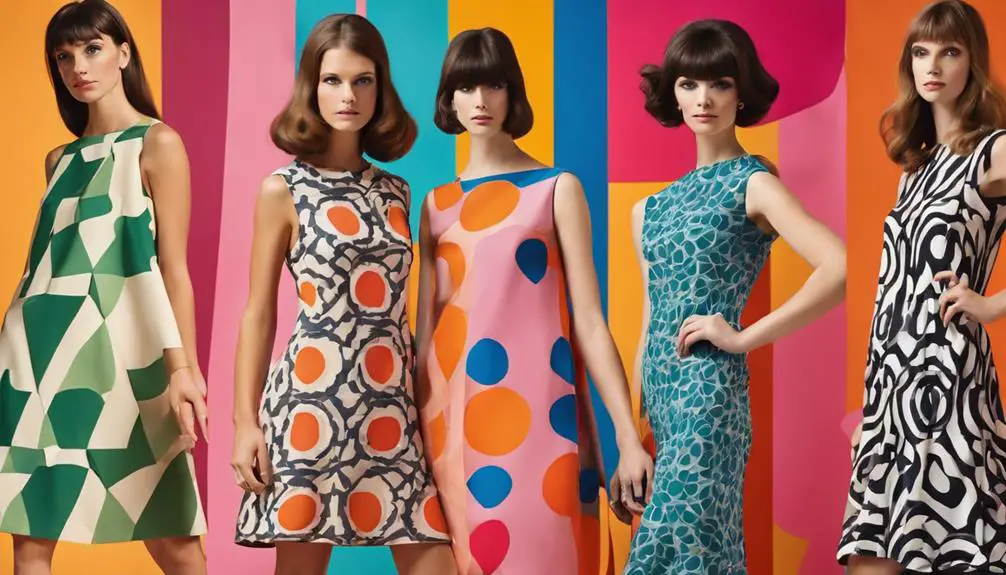
In the dynamic landscape of the 1960s, women's dress styles evolved dramatically, reflecting the era's cultural shifts and youthful exuberance. Gone were the structured silhouettes of the previous decade, replaced by relaxed and playful designs that embodied a newfound sense of freedom. One standout style was the shift dress, famously popularized by Audrey Hepburn. This vintage dress featured clean lines and minimalistic details, emphasizing elegance and simplicity while allowing for comfort and movement. Vintage clothing labels often provide vital insights into the era's fashion trends and craftsmanship.
As the decade progressed, bold prints and vibrant colors emerged, showcasing geometric patterns and psychedelic motifs that mirrored the cultural revolution. The vintage sleeveless dress became a staple, perfect for casual outings or more formal events, while the introduction of A-line and mini dresses offered versatility for various occasions. Fashion designers like Mary Quant and Courrèges played significant roles in this evolution, with Quant's mini skirt becoming an iconic symbol of 1960s youth culture.
This transformative period in fashion not only celebrated individuality but also reflected broader societal changes, as women embraced styles that were both functional and expressive, marking a significant departure from the past.
Iconic Designers and Influences
The 1960s marked a pivotal era in fashion, driven by visionary designers who shaped the aesthetic landscape with their innovative approaches. Designers like André Courrèges and Pierre Cardin introduced clean lines and futuristic designs that became synonymous with the decade. You can't overlook Audrey Hepburn, a true fashion icon, showcasing elegant pencil shift dresses and timeless accessories in films like "Breakfast at Tiffany's."
The mod style emerged as a youthful, vibrant expression, heavily influenced by British designers like Mary Quant, who popularized the mini skirt and A-line silhouettes. With bold colors and geometric patterns, these styles embodied the cultural dynamism of the time.
Here's a glimpse into some influential designers and their signature styles:
| Designer | Signature Style |
|---|---|
| André Courrèges | Futuristic, clean lines |
| Pierre Cardin | Geometric, avant-garde |
| Mary Quant | Mini skirts, playful looks |
Vintage dresses from this era, particularly the Party Dress and Mod Shift, are still highly sought after today. The Abstract Floral prints and innovative materials reflect the diverse influences that defined the 1960s.
Popular Fabric Choices
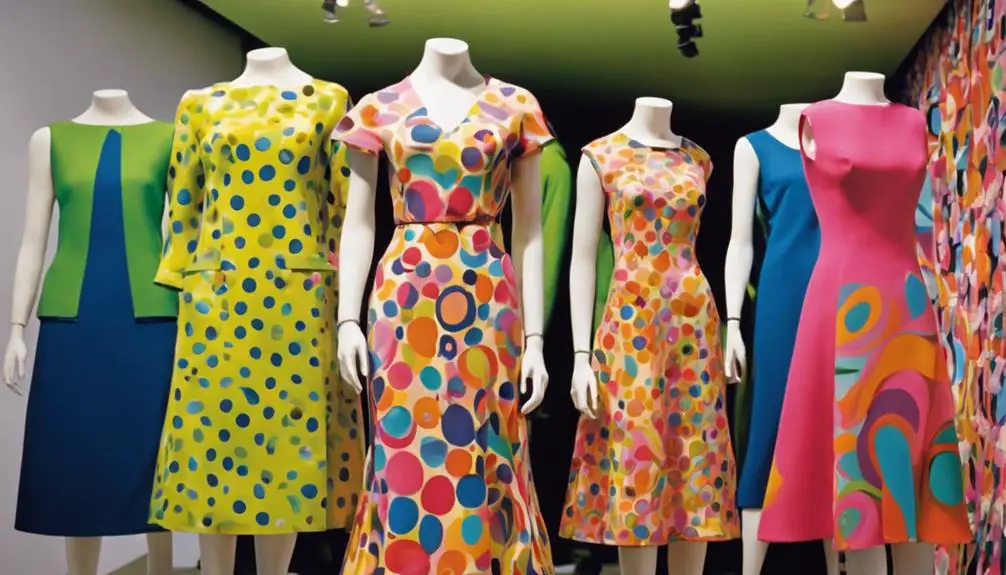
As the innovative designs of the 1960s took center stage, the choice of fabric became equally significant in defining women's dresses of the era. The predominant fabric choice was a cotton blend, often mixed with polyester and spandex. This combination provided the comfort and versatility that women sought in their clothing. Lightweight materials like silk and chiffon emerged as favorites, lending an elegant, flowing silhouette that perfectly complemented the decade's aesthetic.
In addition to these softer fabrics, textures such as lace and tweed gained popularity, especially for cocktail and evening dresses. These textures added visual interest and depth to designs, enhancing the overall look. The vibrant cultural shifts of the 1960s were mirrored in the fabrics' bright colors and bold patterns, showcasing playful prints like florals and geometric designs.
Moreover, the rise of synthetic fabrics made a significant impact, offering easier care and increased durability compared to traditional materials. This shift allowed women to embrace fashion without the constraints of maintenance, making it easier to express their individuality and participate in the exciting fashion revolution of the time.
Notable Trends and Patterns
Women's dresses in the 1960s embraced a stunning array of trends and patterns that mirrored the decade's vibrant cultural landscape. Shift dresses emerged as a defining style, featuring simple, straight-cut silhouettes that allowed for freedom of movement while showcasing bold prints. These dresses often sported floral patterns and geometric designs, reflecting the era's dynamic cultural shifts and the burgeoning counterculture movement.
Polka dots and stripes added a playful flair to many dress designs, balancing elegance with a sense of fun. You could easily spot these patterns on dresses worn by iconic figures like Audrey Hepburn, who popularized sophisticated fabrics such as silk and lace. The A-line dress also gained prominence during this period, flaring out from the waist to provide both comfort and style, making it a staple for many women.
This era's mix of playful motifs and chic silhouettes not only defined fashion but also represented a broader cultural transformation. As you explore the 1960s, you'll notice how these trends and patterns encapsulated the spirit of a generation seeking both individuality and modernity in their attire.
Cultural Impact on Fashion
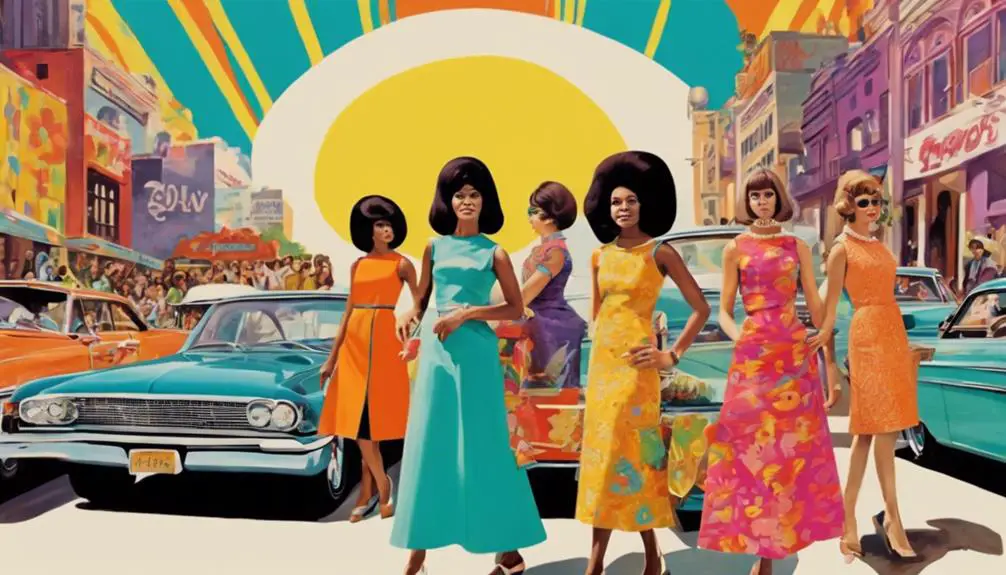
Fashion in the 1960s didn't just reflect the styles of the time; it captured a cultural revolution that reshaped societal norms and personal expression. As you explore this era, you'll notice how vintage dresses evolved from conservative silhouettes to bold designs like the sheath dress and wiggle dress. This shift symbolized a newfound freedom and defiance against traditional expectations.
Iconic figures like Audrey Hepburn and Twiggy didn't just wear these dresses; they became beacons of the youth culture and feminist movement, influencing countless women to express themselves through fashion. The rise of ready-to-wear collections made stylish clothing accessible, fostering a sense of individualism that allowed women to embrace their unique styles.
Innovative designers like Mary Quant introduced materials that reflected the decade's technological advancements, pushing boundaries with plastic and metallic fabrics. The influence of music and art, particularly from bands like the Beatles and the vibrant Pop Art movement, infused fashion with playful aesthetics and daring colors. This cultural impact transformed not only how women dressed but also how they viewed themselves in society. Embracing these styles, they made a powerful statement about autonomy and identity.
Frequently Asked Questions
What Style of Dress Was Popular in the 60s?
In the 60s, you'd find a blend of styles dominating fashion. The pencil shift dress offered sleek elegance, while A-line and mini dresses embraced youthful exuberance, encouraging bold self-expression and transforming how women approached clothing and identity.
What Was the Dress Code in the 60s?
In the 60s, dress codes evolved considerably. You'd notice a shift from conservative styles to vibrant, youthful designs. Formal occasions demanded tailored outfits, while casual settings embraced playful, relaxed attire, reflecting the era's dynamic cultural changes.
How Do You Dress Like the 60s?
To dress like the 60s, embrace iconic silhouettes and bold patterns. Opt for fitted shift dresses, classic accessories, and vibrant colors. Choose comfortable fabrics to reflect the era's timeless elegance and playful spirit.
What Is a Shift Dress in the 60s?
A shift dress in the 60s features a loose, straight silhouette that prioritizes comfort. You'll notice its clean lines and vibrant prints, embodying a chic style that reflects a shift in women's fashion and societal roles.
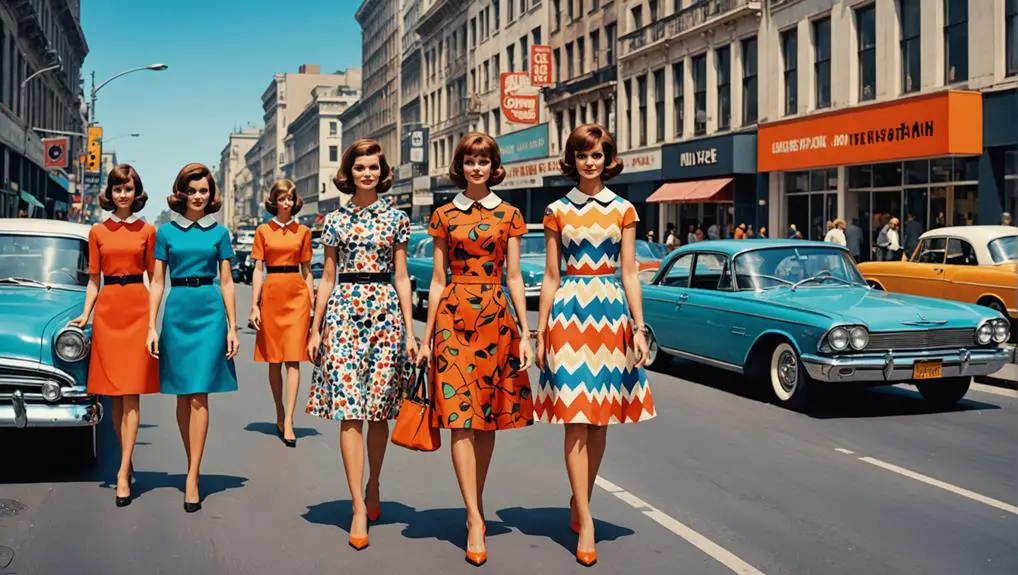



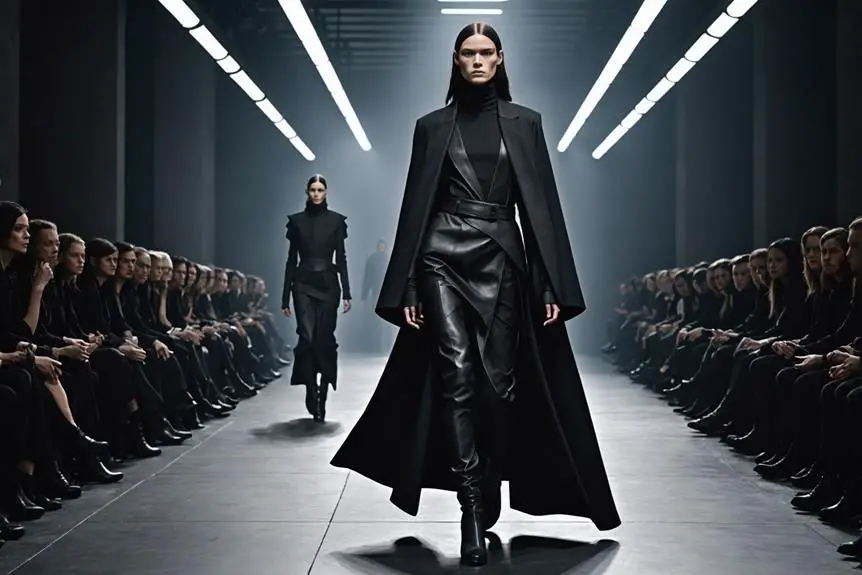
I gotta favorite this site it seems very beneficial handy